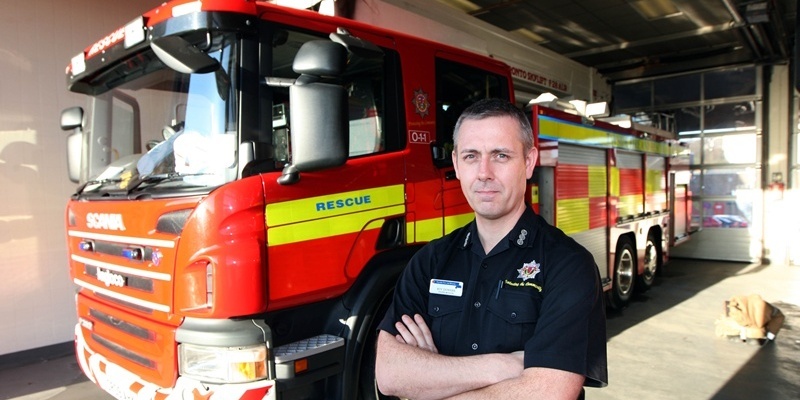Tayside Fire and Rescue has defended its decision to buy three state-of-the-art fire engines amid accusations that its sophisticated machinery is a step backwards.
An aerial rescue pump (ARP) may look like any other fire appliance but it boasts a combined pump and an aerial platform which can be operated by fewer firefighters as compared to the traditional aerial ladder platforms.
But the Fire Brigades Union (FBU) says the new vehicles do not offer value for money and are less well equipped to handle rescue operations.
This view has been strongly contested by Ken Fraser, the head of community safety and operations at Tayside Fire and Rescue. He stressed there had been a great improvement in the latest generation of vehicle.
Tayside now has two ARPs, based in Perth and in the Blackness Road Station in Dundee. A second engine has been ordered for the city and will be housed at the Macalpine Road Station.
Critics say the engines are designed to save money for the country’s cash-strapped brigades as they combine two vehicles into one, therefore reducing staff needs and running costs.
But Mr Fraser said this was not the case for Tayside.
He said: ”We would not compromise on the safety of residents. These engines have been brought in because they give us another option when tackling an emergency call.”
The FBU argues that the crucial hydraulic arm, which can jet water on to flames from an elevated position, has a reduced reach and as a result could jeopardise rescue operations.
In 2008 Central Scotland Fire and Rescue Service reportedly considered legal action after paying £1m for two of the combined fire engines only to discover they did not work as intended.
But, according to Mr Fraser, lessons from the past have helped ensure the current fleet of vehicles is better equipped to cope with an emergency.
He said: ”The early versions admittedly did have teething problems but from the experience of other services we have learnt from this. We have had ARPs in service in Tayside for around two years now and so far they have proved to be better than the older aerial appliances.
”They courted controversy but we have learnt a lot from that and we have now what is the third or fourth generation of vehicle. In fact we have had five international visits from brigades who want to learn from us.”
He added: ”Commenting from a Tayside perspective, the new engines have been very successful. The reach is not as far as the older vehicles but we are only talking about five metres.
”The vehicles provide us with an additional resource and a new tactic to aid in a rescue operation.”
Not long after their inception the new vehicles suffered a catalogue of problems including concerns over the weight, reliability and speed of the engines.
Jim Malone, regional organiser for Fire Brigades Union Scotland, believes the new appliances were introduced as a cost-saving measure.
He added: ”It has meant jobs can be shed by bringing in a machine that can do two jobs. But there has been a catalogue of problems throughout the country.
”It is a compromise vehicle and the FBU has had serious health and safety concerns since its inception.
”They are not bespoke vehicles and they don’t do the job of the aerial ladder platform nor have the same capacity to deliver the same volume of water. It’s very limited in terms of its operating window.
”The ones in Dundee are the best option out of a bad bunch but they don’t meet the requirements needed and we don’t think the public are getting the best value.
”They were introduced at the behest of the previous administration at Holyrood to reduce the number of frontline firefighters.”
ARPs are equipped with a greater amount of equipment including specialist cutting tools allowing a single crew to attend a host of different incidents.
